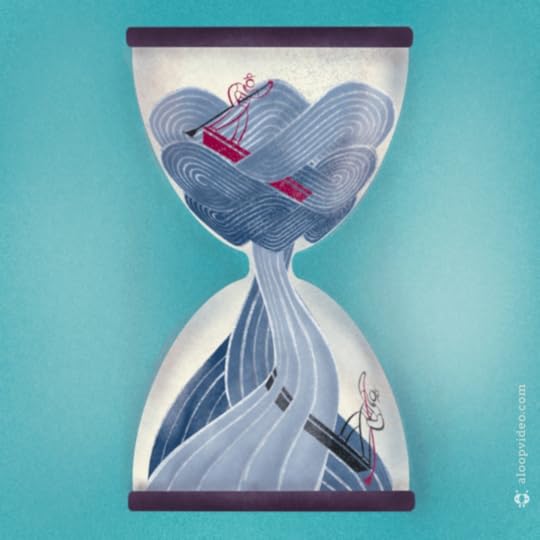FYI: In quantum mechanics, time may flow differently
 Artistic illustration of a gondolier trapped in a quantum superposition of time flows./© Aloop Visual & Science, University of Vienna, Institute for Quantum Optics and Quantum Information of the Austrian Academy of Sciences
Artistic illustration of a gondolier trapped in a quantum superposition of time flows./© Aloop Visual & Science, University of Vienna, Institute for Quantum Optics and Quantum Information of the Austrian Academy of SciencesBecause the entropy is minimal, researchers say:
n physics, this propensity of certain phenomena to occur in only one time’s direction is linked to their production of ‘entropy’, which is the physical quantity defining the amount of disorder in a system. In nature, processes tend to evolve spontaneously from states with less disorder to states with more disorder, and this propensity can be used to identify an arrow of time. Thus, if a phenomenon produces a large amount of entropy, observing its time-reversal is so improbable as to become essentially impossible. However, when the entropy produced is small enough, there is a non-negligible probability of seeing the time-reversal of a phenomenon occur naturally. Thinking back to the toothpaste example, if we were to squeeze the tube only gently and only a very small part of the toothpaste came out, it would not be so unlikely to observe it re-entering the tube, sucked in by the tube’s decompression. On the other hand, as the tube is squeezed with more strength, the toothpaste will spread out in an irreversible way, requiring a much greater effort if one were to put all it back in…
“In our work, we quantified the entropy produced by a system evolving in quantum superposition of processes with opposite time arrows. We found that this most often results in projecting the system onto a well-defined time’s direction, corresponding to the most likely process of the two” explains Gonzalo Manzano, a co-author of the study. And yet, when small amounts of entropy are involved (for instance, when there is so little toothpaste spilled that one could see it being reabsorbed into the tube), then one can physically observe the consequences of the system having evolved along the forward and backward temporal directions at the same time. As pointed out by Giulia Rubino, lead-author of the publication, “although time is often treated as a continuously increasing parameter, our study shows that the laws governing its flow in quantum mechanical contexts are much more complex. This may suggest that we need to rethink the way we represent this quantity in all those contexts where quantum laws play a crucial role.”
University of Vienna, “In quantum mechanics, not even time flows as you might expect it to” at Eurekalert (November 29, 2021)
Cue time travel — but only if you are very, very small.
The paper is open access.
Copyright © 2021 Uncommon Descent . This Feed is for personal non-commercial use only. If you are not reading this material in your news aggregator, the site you are looking at is guilty of copyright infringement UNLESS EXPLICIT PERMISSION OTHERWISE HAS BEEN GIVEN. Please contact legal@uncommondescent.com so we can take legal action immediately.Plugin by Taragana
Michael J. Behe's Blog
- Michael J. Behe's profile
- 219 followers



